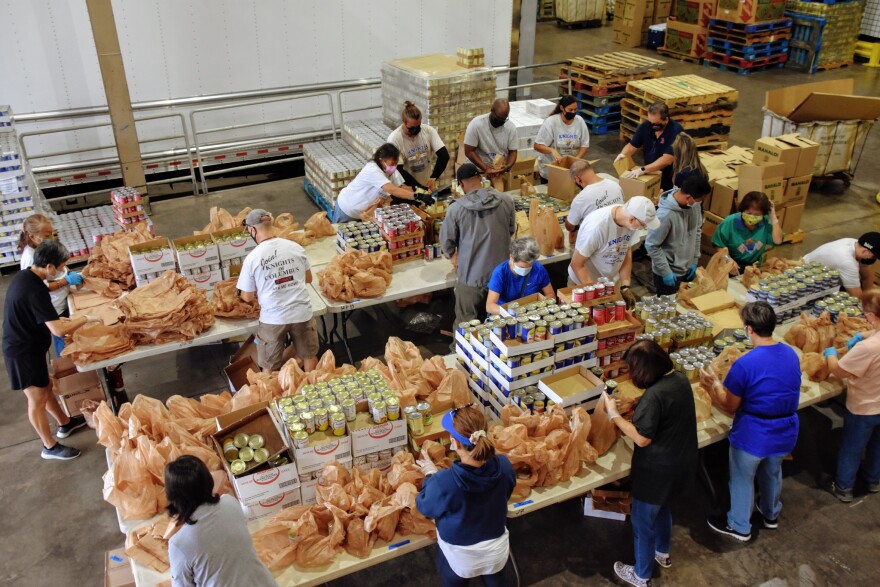A few years ago, leadership at The Food Basket on Hawaiʻi Island came to a terrifying realization. There was no such thing as "normal" anymore. Disaster had become the new baseline.
Over the last decade, the Big Island community was hit with one disaster after another.
Hurricane Iselle hit the island in 2014, ripping roofs off houses and leaving thousands without power. Then 2018 brought the dual threats of Hurricane Lane and the eruption of Kīlauea, which destroyed more than 700 homes and displaced some 3,000 people. And then just as residents were getting back on their feet, the pandemic shut everything down.
"Each one of those disasters has built on the other one, and it's been hard for people to catch their breath," said Kristin Frost Albrecht, the executive director of The Food Basket.

Climate change is increasing the frequency and severity of storms, wildfires and floods. With that in mind, The Food Basket decided to go on the offensive in 2021. The board got together to develop a new strategic plan.
"The premise is that disasters are the new normal, we're just going to plan for them," Frost Albrecht said.
Part of The Food Basket's resiliency strategy is building a new 24.5-acre campus in Hilo. It has enough land for the organization to grow some of its own food and — critically — sits outside the tsunami evacuation zone.
"We very intentionally looked for a place where we can have our facilities that would be as safe as possibly could be in a disaster," Frost Albrecht said.
The Food Basket is one of several food banks across the state adopting a "hope for the best, plan for the worst" approach.
On Kauaʻi and Oʻahu, the Hawaiʻi Foodbank is part of a local cohort trying to find ways to keep up food assistance during devastating disasters.
Rachael Carrell, the organization's emergency planning coordinator, said the number one lesson in disaster planning is "redundancy, redundancy, redundancy."
"You cannot be entirely reliant on any one system," Carrell said.
That applies to everything from ensuring facilities have backup power to developing multiple ways in and out of communities if major highways or evacuation routes are blocked.

Disasters may strike any community, at any time, and it's important to be prepared. State emergency management officials have repeatedly urged residents to keep a 14-day food supply.
But Carrell said that may not be feasible for families already struggling to put food on the table. A recent survey by the organization found that 1 in 3 households face food insecurity.
"The food bank knows and serves a lot of families that don't have the means to prepare," she said.
That makes disaster preparation all the more important for families without the means. If at least some households have their own food supplies, then food banks can better prioritize food-insecure families.
"If you can do something, please do," Carrell said.





